Learning Management System (LMS) Statistics By Usage, Adoption and Facts (2025)

Updated · Oct 24, 2025

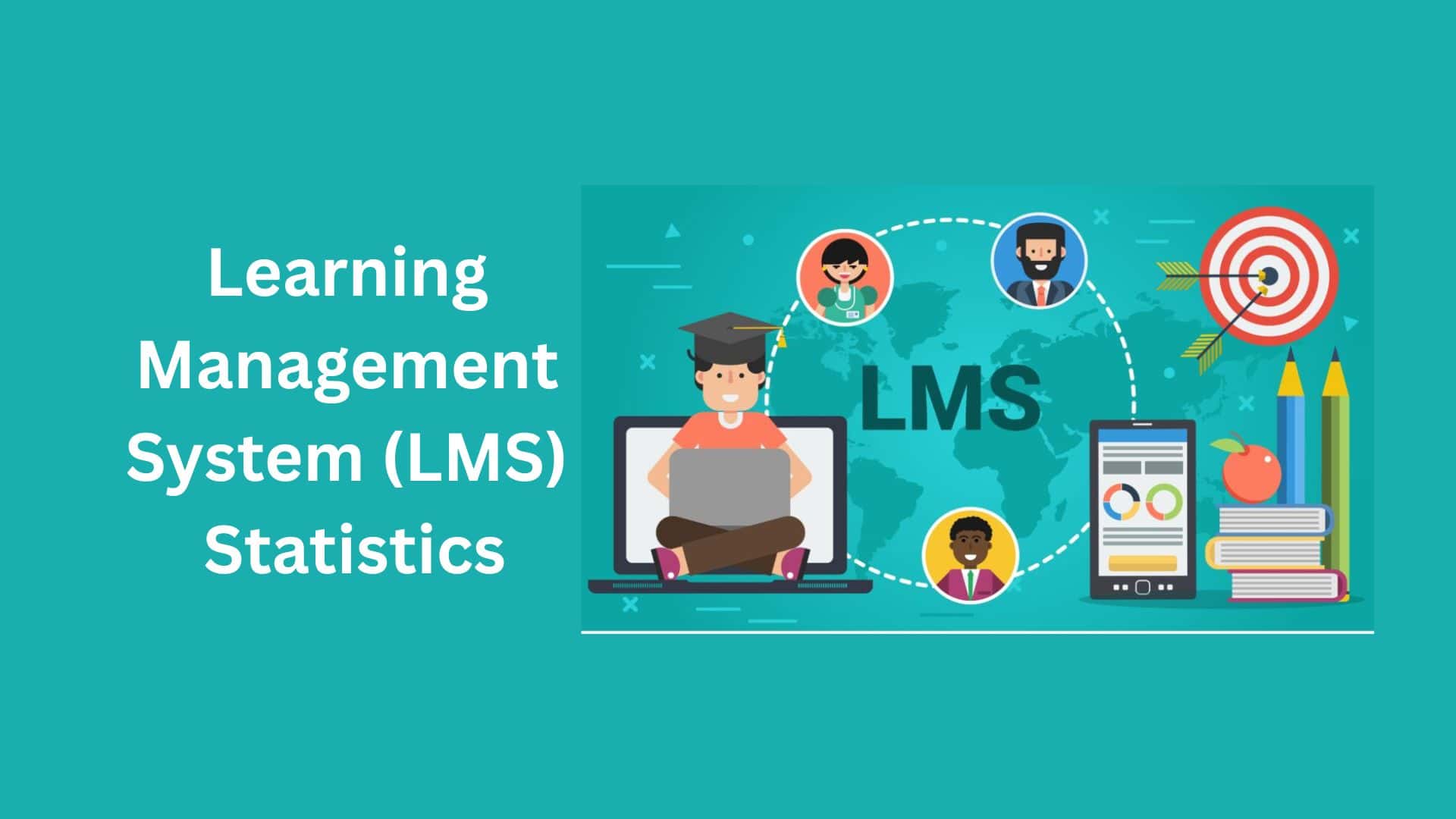
WHAT WE HAVE ON THIS PAGE
- Introduction
- Editor’s Choice
- General Learning Management System Statistics
- LMS User Statistics
- LMS Software Adoption Statistics
- Learning Management System Market Size
- LMS Accessibility Statistics
- Impact and E-Learning Effectiveness
- Barriers to LMS adoption
- Corporate eLearning Adoption
- Mobile Learning Statistics
- Competitive Landscape
- AI in Learning and Development
- Conclusion
Introduction
LMS Statistics: Since the advent of digital learning, the Learning Management System, or LMS, has evolved from a basic course hosting platform into the indispensable digital backbone for global education and corporate training. It is the core engine managing, delivering, and tracking digital learning content for millions.
In this story, I’d like to discuss the functionality further. What does the data tell us about the current state and future trajectory of this kind of technology? Which markets are driving adoption, how big is the user base, and what features are essential for a modern, successful Learning Management System? Without further ado, let’s get into the stats.
Editor’s Choice
- According to Market.us, the Global Learning Management System Market is expected to rise from USD 24.5 billion in 2024 to nearly USD 107.9 billion by 2033, marking a consistent growth rate of 17.9% over the period.
- The cloud-based LMS has become the industry standard, securing over 70% of the market share due to its superior flexibility and reduced maintenance costs.
- This deployment model is overwhelmingly preferred, with 87% of US organizations already having shifted to this scalable architecture.
- Companies utilizing comprehensive, LMS-anchored training programs report a massive 218% increase in overall revenue and a 24% rise in profit margins.
- This demonstrates an undeniable financial ROI, with a reported average return of $4.53 for every $1 spent on training initiatives.
- An overwhelming 80% of employees demand personalized learning paths, forcing the LMS to adapt to individual skill gaps and job roles.
- Microlearning is favored by 94% of learners and, along with gamification, is a critical feature for maximizing content engagement and knowledge retention.
- North America holds the largest current revenue share at over 37%, supported by its mature technological infrastructure and early market penetration.
- The Asia-Pacific (APAC) region is the engine of future expansion, projected to have the highest e-learning CAGR of 1% through 2030.
- A massive 83% of organizations worldwide currently leverage an LMS, signifying its status as a standard corporate and academic tool.
- This adoption rate climbs to approximately 98% of major enterprises, confirming its necessity for managing training at scale.
- The lack of seamless integration with other systems (HRIS, CRM) is the most common point of dissatisfaction, cited by 52% of all LMS users. Consequently, 37% of organizations are actively planning to replace their current LMS.
General Learning Management System Statistics
- The first learning management concept was introduced in 1924 when psychology professor Sidney Pressey created an electronic teaching device that looked like a typewriter. It presented multiple-choice questions through a small window and allowed learners to respond directly.
- According to Pressey (1926, cited in Kadosh & Dowker, 2015), the purpose of this invention was to help teachers focus more on inspiring and thought-provoking activities rather than routine testing tasks.
- Since then, learning management systems have evolved and become a common tool in education, allowing teachers and students to use digital materials and interactive content such as digital storytelling examples for various subjects.
- In 2024, global investment in education technology declined to 2.4 billion dollars, marking the lowest level since 2015, and dropping from 3 billion dollars recorded in 2023, according to Holon IQ (2025).
- This drop was mainly linked to the surge of funding during the pandemic years, which led investors to take a more careful and strategic approach in the post-pandemic period, as stated by Rauf (2025).
- Despite lower funding, the global e-learning platform market is projected to reach around 995.9 million users by 2029, based on Statista (2025) data.
- In 2023, Canvas led the North American LMS market with a 41% share, followed by Blackboard with 17%, while Moodle and Brightspace each held 16% of the market, according to Hill (2024).
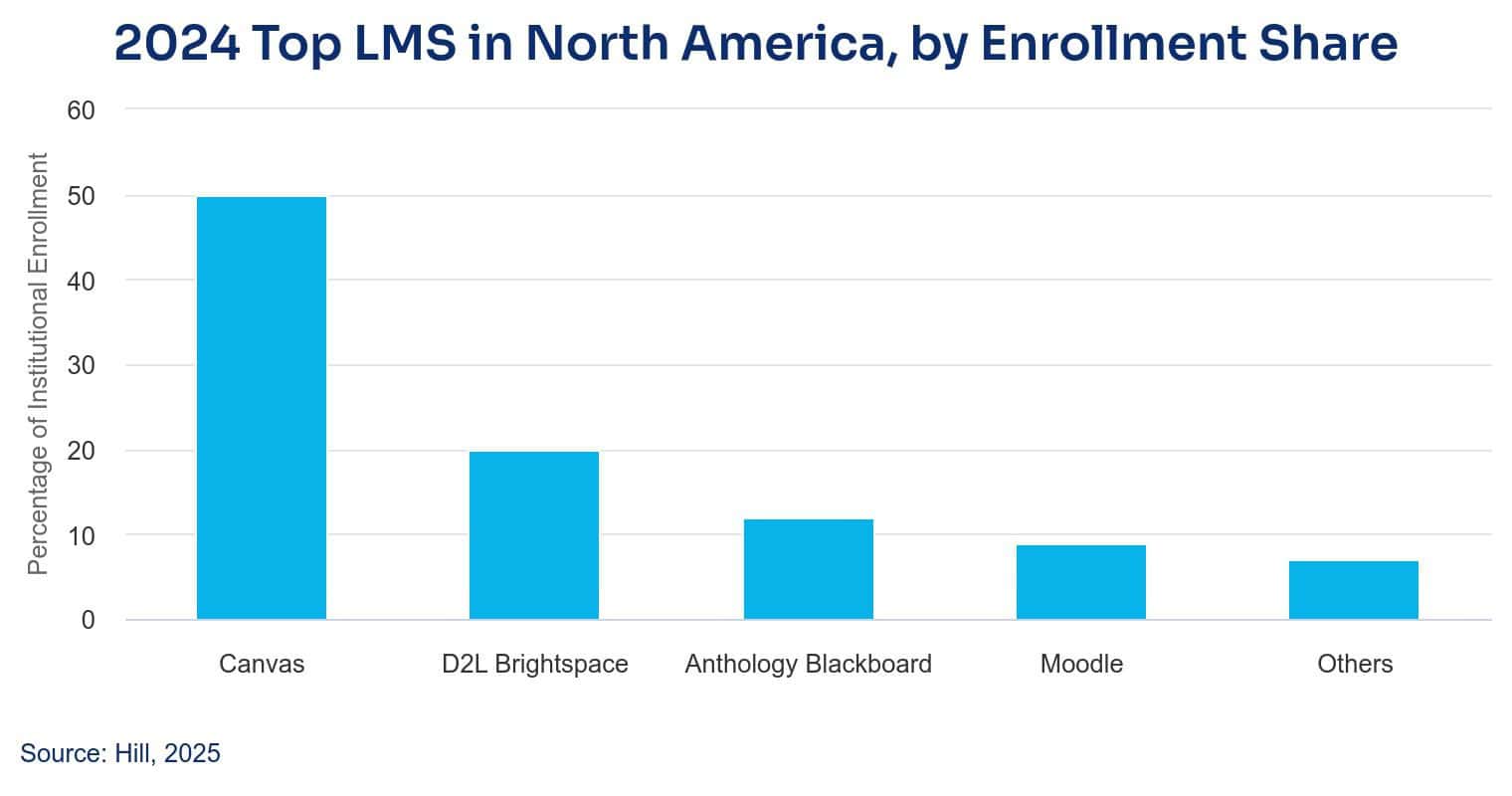
(Source: Research.com)
LMS User Statistics
- According to the Integrated Postsecondary Education Data System, 514,109 students in the U.S. were enrolled only in distance education institutions during 2023–2024.
- Around 4,982,428 learners were taking distance education courses exclusively.
- In the ninth CHLOE study, 60% of chief online learning officers stated that online classes filled up faster than on-campus ones.
- Based on Rise Up’s 2024 survey, 72% of learning and development (L&D) professionals said blended learning had a positive effect on employees.
- In the same survey, 45% of employees mentioned they would likely stay longer in companies that support learning and development.
- About 64% of L&D leaders reported better employee engagement after increasing investments in L&D programs.
- According to TechSmith’s 2024 report, 83% of learners preferred watching videos when learning instructional content.
- The average preferred video duration for learning was 10–19 minutes.
- Around 87% of learners favored real human presenters over animated or AI-created characters in educational videos.
- According to Market.us, in 2023, higher education institutions accounted for over 30% of global LMS end-user share, followed by K–12 schools and corporate enterprises.
- The total number of LMS users worldwide reached 73.8 million, with 87% using web-based LMS platforms.
- Corporate executives made up 65% of LMS users, while 35% were managers.
- Around 37% of LMS users were adults, and 28% were younger learners.
- In the UK, 24% of buyers of online learning materials were aged between 16 and 24 years.
- About 90% of students preferred online learning over traditional methods.
- Nearly 49% of students had taken at least one online course.
- An estimated 4.6 million college students studied online.
- The education sector accounted for 21% of the overall LMS market.
- Other major industries using LMS included technology (12%), manufacturing (9%), and healthcare (7%).
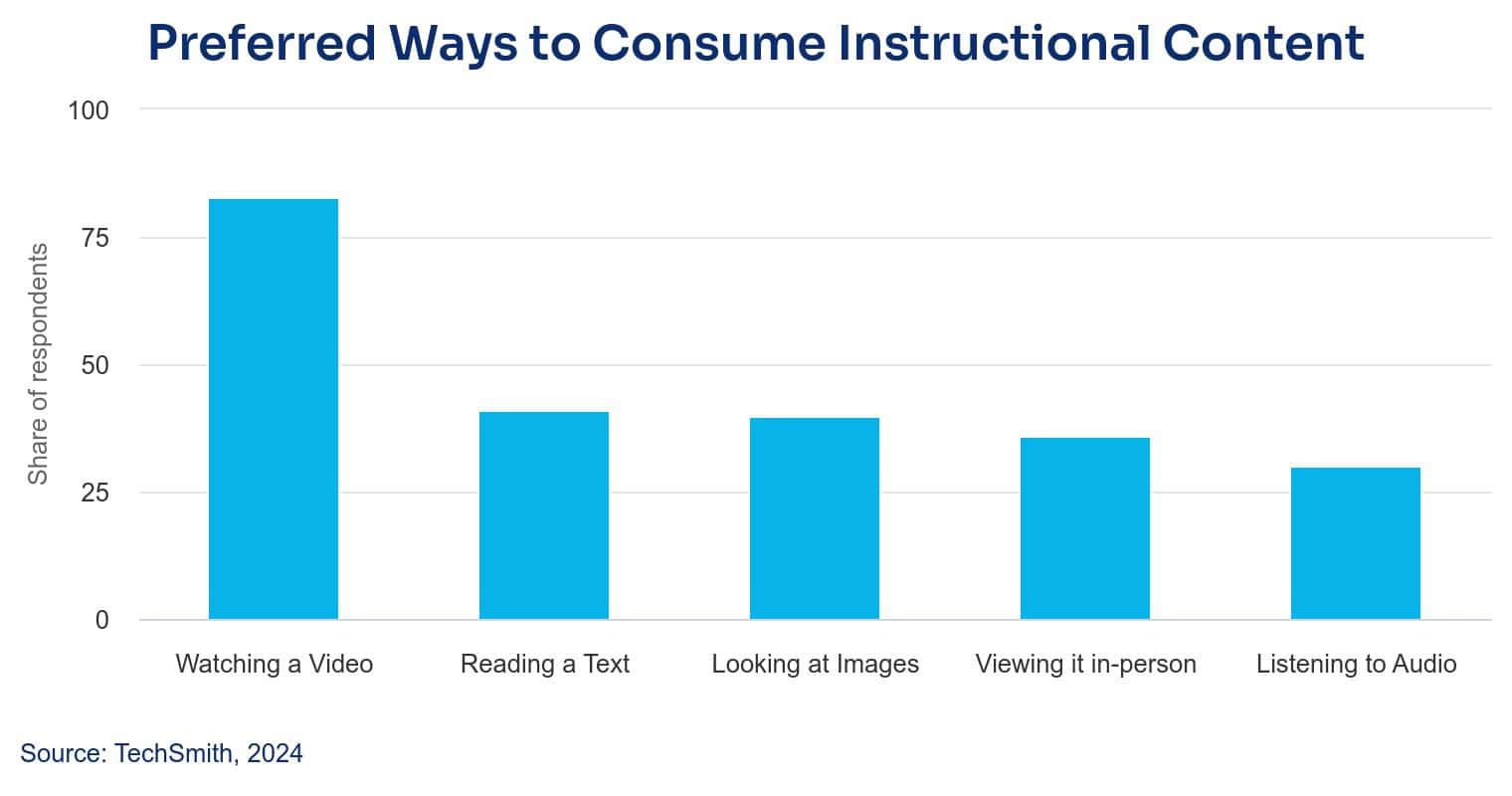
(Source: Research.com)
LMS Software Adoption Statistics
- The spread of learning management systems has changed how education works worldwide. In the present digital economy, more schools and universities use LMS tools to improve how students learn and teachers teach. These systems make it easier to design courses, record screens, and track performance.
- According to Grand View Research and Statista, LMS usage has become essential for many universities and organizations. Institutions are using information and communication technologies to support distance learning and online programs to meet growing education needs.
- In North America, LMS platforms are widely used in both universities and businesses. Online degree programs are now common, especially in states like Texas. In 2024, the region accounted for over 36% of global LMS revenue. By 2029, the number of online learning users will reach 101.1 million, while the user penetration rate is projected to increase from 15.7% in 2025 to 19.3% in 2029. The average revenue per user is expected to be $59.95.
- In South and Latin America, the fast growth of mobile devices has created major opportunities for eLearning. The market is expanding, supported by a 17% CAGR from 2022 to 2030. Corporate training demand is rising as global companies rely more on digital education tools. Studies from Endeavor Insight show that flexibility and better job prospects are key reasons for online education adoption. In South America, the online platform market will reach $4.06 billion by 2029, with 66.1 million users and a 17.4% user penetration rate. In Latin America, the LMS market will reach $3.7 million by 2030, and Moodle leads the market with a 73% share.
- In Europe, online education continues to grow as universities offer more online degrees to international students. According to Eurostat, Ireland has the highest share of online learners at 61%, followed by the Netherlands (59%) and Finland (53%). The European LMS market will reach $51.99 billion by 2034, growing at 19.20% annually. By 2029, there will be 112.3 million users, and user penetration will reach 15.2%. Moodle remains dominant with a 69% market share, while Blackboard Learn and Canvas each hold 8%.
- In Asia and the Asia-Pacific, growing internet use and mobile learning are driving LMS growth. Statista reports that the online learning market will reach $49.33 billion by 2025 with 678.8 million users by 2029, and user penetration will reach 17.6%. China alone will generate $40.43 billion in 2025 and has a projected user rate of 212.8%, marking the world’s highest level. The LMS market in the Asia-Pacific is projected to reach $20.6 billion by 2030, growing 20.28% annually.
- In Africa, eLearning is expanding rapidly as countries focus on improving education quality. However, access to the internet, limited online materials, and lack of teacher training continue to be barriers. Research and Markets report an annual growth rate of 9.12% from 2025 to 2033, taking the eLearning market value to $7.7 billion by 2033. In the Middle East and Africa, the LMS market was valued at $947.1 million in 2024 and is projected to reach $3.1 billion by 2030, growing at a 22.1% CAGR. South Africa is expected to record the highest regional growth rate.
Learning Management System Market Size

- According to the Market.us, the Global Learning Management System Market is expected to rise from USD 24.5 Billion in 2024 to nearly USD 107.9 Billion by 2033, marking a consistent growth rate of 17.9% over the period.
- The widespread benefits of E-Learning and LMS were highlighted in a survey by the American Society for Training and Development. The study revealed that organizations with structured training programs achieved a 218% increase in revenue and a 24% rise in profit margins, emphasizing the economic value of digital learning.
- In 2023, the Solution segment emerged as the market leader, accounting for over 67% share. These solutions helped learners access personalized and flexible digital education environments.
- The Cloud-based LMS category dominated in 2023, securing over 70% of the market share due to its adaptability, scalability, and ease of access.
- The Subscription-based pricing model held a strong position in 2023, with more than 75% share, offering users affordability and consistent access to updates and new features.
- The Higher Education segment captured over 30% market share in 2023, driven by universities and colleges integrating LMS to support remote learning and interactive teaching technologies.
- North America maintained a leading role in 2023, representing over 37% of the global LMS market. This dominance can be attributed to advanced technology infrastructure, strong internet connectivity, and continuous investment in education technology.
| Market Segment | 2023/2024 Value or Rate |
| Global Market Value | $24.5 Billion (2024) |
| Solution Segment Share | Over 67% |
| Cloud Deployment Share | Over 70% |
| Subscription-Based Share | Over 75% |
| Higher Education Share | Over 30% |
| North America Market Share | Over 37% (US$7.6 billion demand) |
| Impact on Revenue | 218% Increase for trained companies |
LMS Accessibility Statistics
- Accessibility has become an essential part of Learning Management System (LMS) success, ensuring that platforms remain user-friendly for schools, universities, and organizations.
- Since most LMS platforms are cloud-based, they can be accessed through desktops, laptops, tablets, and mobile devices, providing flexibility for learners across environments.
- Around 89% of employees use desktops, 78% use laptops, and 25% use mobile devices to access their LMS platforms.
- Nearly 97% of employees believe that using tablets helps improve learning by providing greater flexibility.
- In 2020, the mobile learning market was valued at $37.6 million, showing the early phase of digital adoption in education.
- About 76% of online learners prefer to use their personal devices to access online course materials.
- Learners who use smartphones finish their course content 45% faster than those who use computers.
- According to Statista (2024), global installations of educational apps increased by 20% in January 2024 compared to December 2023.
- On January 1, 2024, installations of language learning apps increased by 26%, reflecting higher interest in digital education tools.
- The mobile learning market is projected to reach $287.17 billion by 2030, growing at an annual rate of 24.78% from $94.93 billion in 2025, according to Mordor Intelligence (2025).
- Educational apps accounted for 9.56% of all iOS applications on the Apple App Store, ranking as the fourth-largest app category, as reported by Statista (2024).
- On the Google Play Store, educational apps made up 11.5% of all popular applications, coming right after mobile gaming apps, based on Statista (2024) data.
- A survey by Talent LMS (2022) found that 37% of dissatisfied employees said training would be more effective if they had more control over it.
- The same survey revealed that 38% of employees wanted their training programs to be delivered on mobile platforms, showing a clear preference for mobile accessibility in learning.
Impact and E-Learning Effectiveness
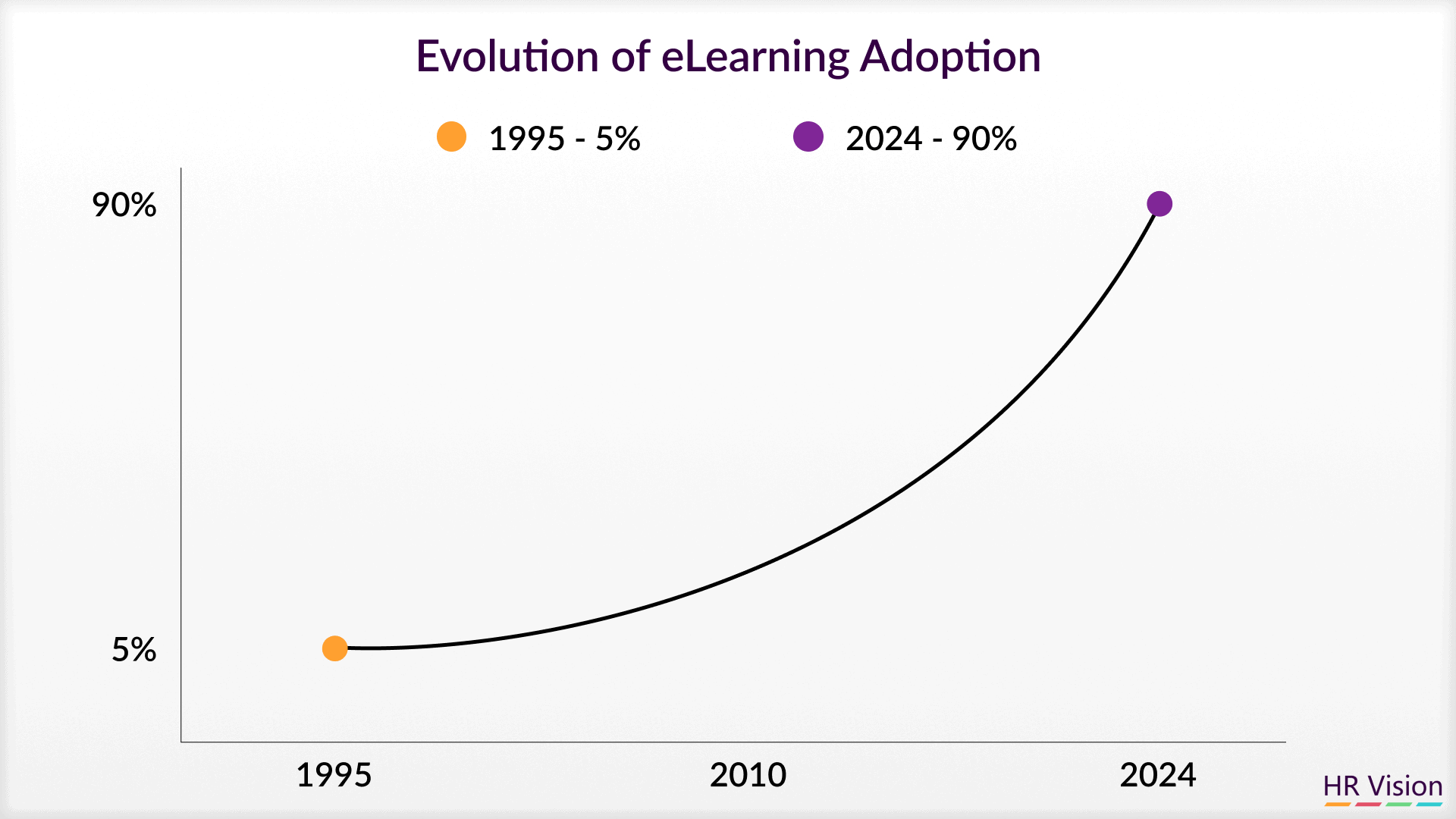
- A vast majority, 72% of organizations, firmly state that the effective use of a Learning Management System provides them with a tangible and necessary competitive advantage in their market.
- The financial return on investment (ROI) for training delivered through an LMS is compelling, with studies showing an average return of $4.53 for every $1 spent on training.
- Organizations that strategically invest in comprehensive employee training programs, often facilitated by an LMS, report substantially higher financial metrics: they show an astonishing 218% higher revenue and 24% higher profit margins compared to competitors who do not invest.
- Employee retention is critically tied to development opportunities: a powerful 94% of employees state they would remain with an organization longer if the company showed commitment by offering continuous learning and development through platforms like the LMS.
- Efficiency gains from e-learning are significant, as it requires approximately 40% to 60% less time for employees to complete training compared to traditional, in-person classroom instruction.
- The effectiveness of knowledge transfer is notably enhanced by the LMS, with retention rates increasing dramatically, by an estimated 25% to 60%, compared to older, passive learning methods.
- 73% of organizations also report that their use of an LMS for compliance training helps significantly reduce potential legal costs and fines by ensuring standardized, auditable, and documented adherence to regulations.
- An overwhelming 91% of HR professionals recognize and confirm that e-learning tools and the Learning Management System are highly effective mechanisms for achieving organizational employee development goals.
| Competitive Advantage | 72% of organizations confirm it |
| Return on Investment (ROI) | $4.53 returned for every $1 spent |
| Revenue Increase (with training) | 218% higher reported revenue |
| Employee Retention | 94% would stay longer |
| Time Savings in Training | 40% to 60% less time required |
| Knowledge Retention | Increases by 25% to 60% |
Barriers to LMS adoption
- The process of adopting a Learning Management System (LMS) in higher education is complex and cannot be rushed. Institutions must carefully consider factors such as system design, user-friendliness, and mobile compatibility to ensure successful implementation.
- According to Kizilcec et al. (2017), it is important to provide adequate guidance and technical support to both teachers and students who use LMS platforms. However, Araka et al. (2020) noted that offering continuous and personalized support becomes more difficult as the number of users increases.
- To improve LMS adoption, learning and development professionals are working on simplifying LMS interfaces and making user onboarding easier to increase participation and satisfaction.
- In 2024, voters approved borrowing funds worth $113.5 billion through bonds to help school districts improve construction projects and technology infrastructure (Lieberman, 2024). Despite this, limited funding continues to be a major challenge for LMS adoption, as schools must balance multiple financial priorities.
- The negative effect of high costs can be reduced by the growing number of institutions offering affordable online programs. For example, affordable MSW online programs make it easier for students to invest in education without excessive financial strain.
- According to Training Magazine (2024), about 15% of U.S. companies planned to allocate part of their budget for LMS adoption in 2025, while another 15% intended to invest in mobile learning.
- Furthermore, 39% of companies aimed to purchase new online learning systems and tools in 2025, reflecting steady growth in digital learning investments.
- In 2024, approximately 74% of U.S. firms reduced their budgets due to economic uncertainty. However, 38% of companies still increased spending on new technology and equipment to strengthen digital learning capabilities.
- Across the U.S., around 86% of firms managed their LMS operations internally without outsourcing administrative services. Additionally, 54% of organizations chose not to outsource LMS hosting or technical operations, showing a preference for in-house control and cost efficiency.
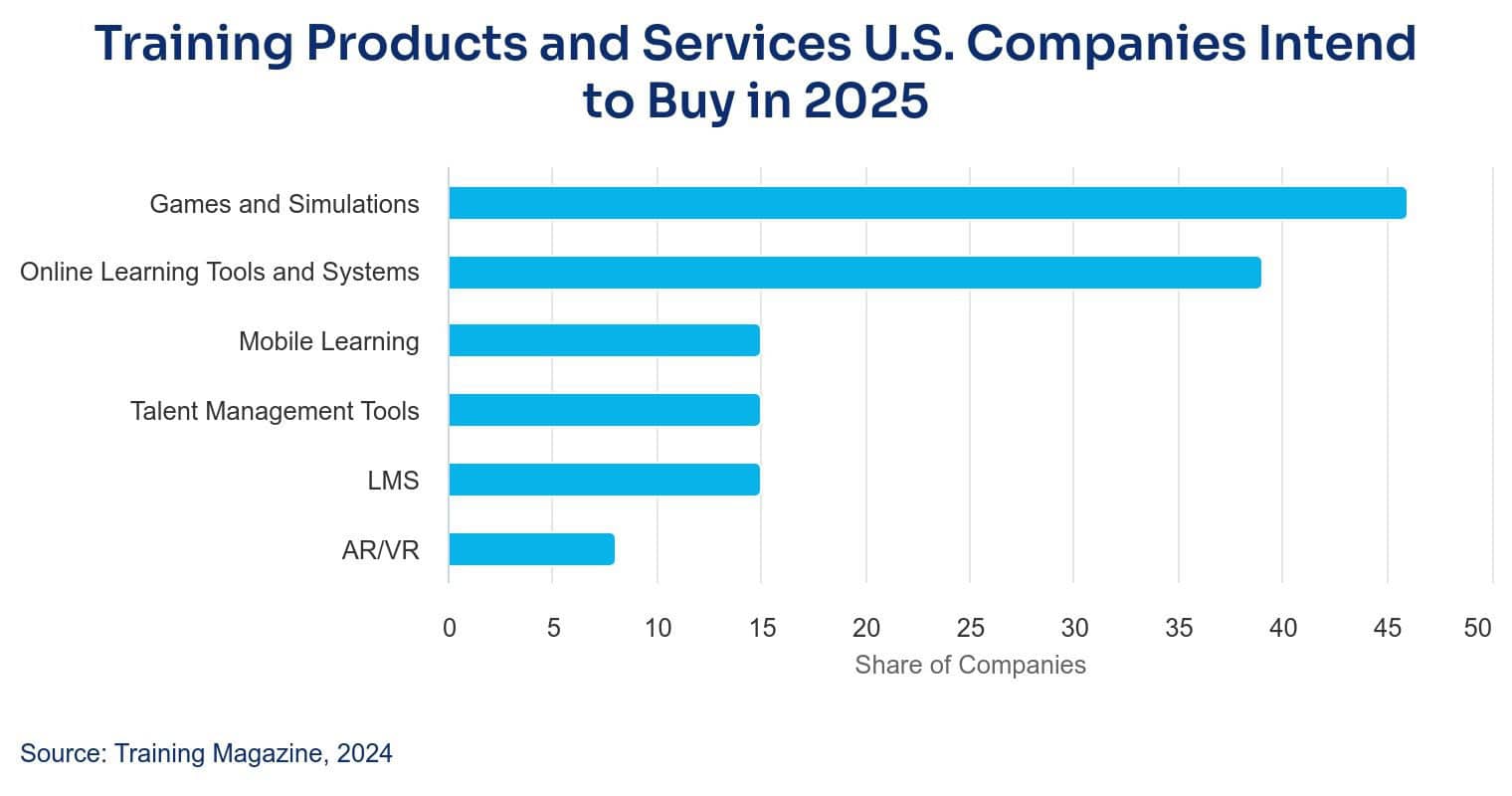
(Source: Research.com)
Corporate eLearning Adoption
- Corporate learning has rapidly moved online as businesses focus on improving employee skills and performance through digital platforms.
- According to Brighter Strides ABA Therapy, 98% of companies planned to use eLearning for staff training by 2023, showing that digital training has become a standard practice in workplaces.
- Data from Devlin Peck shows that the corporate eLearning market increased from $245.5 billion in 2022 to an expected $462.6 billion by 2027, growing at over 13% CAGR, which highlights the strong demand for digital learning tools.
- Exploding Topics reports that 61% of learning and development professionals consider closing skill gaps their main training goal, while others aim to improve company growth and employee engagement.
- Shift eLearning notes that 42% of businesses have experienced higher revenue after adopting eLearning, mainly due to increased employee efficiency and output.
- According to IBM and Shift eLearning, every $1 invested in online training can return about $30 in productivity gains, as employees learn faster and apply new skills more effectively.
Mobile Learning Statistics
- The global mobile learning market is expected to reach USD 604.8 billion by 2033, rising from USD 70.3 billion in 2023, with an average annual growth rate of 24.01% between 2024 and 2033.
- In 2023, the Mobile and Video-Based Courseware segment held over 35% of the market share, showing its strong preference among learners.
- The Corporate Learning segment accounted for more than 37% of the total market, supported by companies using mobile tools for employee training and upskilling.
- North America represented over 34% of the global market in 2023, backed by advanced technology adoption and strong investment in digital education.
- Around 67% of companies in the United States have already adopted mobile learning platforms to allow employees to study using smartphones or tablets.
- Nearly 70% of learners feel more motivated when using mobile devices compared to computers, as they find smartphones more familiar and convenient.
- Mobile-based education improves knowledge retention by 45% compared to traditional learning formats, due to short and interactive lessons.
- About 94% of Gen Z learners use smartphones for study purposes, reflecting their preference for digital learning environments.
- Around 70% of employees now rely on smartphones to access study materials, showing a continued move toward mobile learning.
- Mobile learning applications can boost productivity by up to 45%, allowing faster task completion and better performance.
- Employee performance improves by approximately 50% when mobile learning is included in their training schedule.
- Completion rates in mobile learning are about 45% higher than in standard e-learning programs.
- Roughly 61% of employees prefer to learn at their own pace, with mobile platforms providing flexibility for that style.
- Mobile learning helps reduce study time by nearly 60%, offering a faster way to complete training sessions.
- Companies report a 40–60% reduction in total training time when using mobile-based programs, leading to lower costs.
- About 70% of Fortune 500 firms already use mobile learning as part of their internal training approach.
- Almost 85% of college students own smartphones, giving them easy access to educational content on mobile platforms.
- Despite strong adoption rates, only 34% of all organizations have formally added mobile learning into their training systems, leaving scope for further expansion.
- Engagement levels in mobile learning are around three times higher than in traditional e-learning, improving learner motivation.
- Training through mobile devices saves about 37% of learning time, making it more efficient and practical.
- Around 46% of users consider mobile accessibility to be a key factor when choosing a learning solution.
- Mobile-based lessons can increase engagement by 72%, making them more interactive and appealing.
- Businesses using eLearning, including mobile tools, record about 26% higher revenue per employee, showing measurable benefits.
- In India, a 2023 report from the Development Intelligence Unit found that 49.3% of rural students had smartphone access. Among them, 34% downloaded study material, and 18% used online tutorials for education.
Competitive Landscape
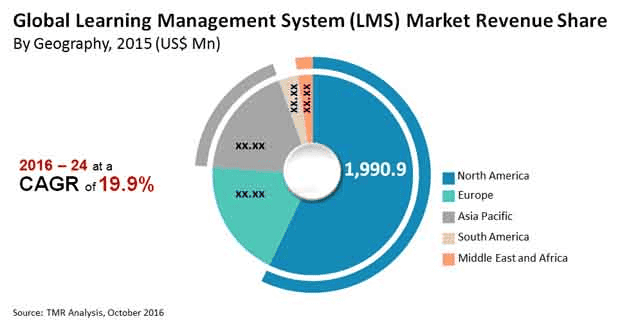
- The academic sector features intensely competitive market shares, with Canvas claiming an impressive 41% of the North American higher education LMS market share.
- Following Canvas in the higher education space are the long-established platforms: Blackboard holds 17%, while both Moodle (the open-source giant) and Brightspace each account for 16% of the higher education market.
- In the broader K-12 and general enterprise markets, Google Classroom claims the largest single market share across all LMS software at approximately 39%.
- The decision to replace an existing platform is surprisingly common, as 37% of all organizations indicate a desire to replace their current Learning Management System.
- Of those organizations planning a platform switch, almost half 45% aim to complete the entire replacement process within the next year.
- Despite the push for change, there is also platform longevity, with 44% of organizations having consistently used their current LMS for four years or more.
- The desire for a holistic technology stack is evident, with 73% of organizations stating it is at least “somewhat important” for their LMS provider to offer a full suite of integrated solutions, rather than just a standalone product.
| Canvas | North American Higher Education | 41% Market Share |
| Google Classroom | K-12 / Broad Use | 39% Overall Market Share |
| Blackboard | Higher Education | 17% Market Share |
| Moodle | Higher Education / Open Source | 16% Market Share |
| Organizations Planning Replacement | N/A | 37% |
| Organizations Using LMS for 4 Years | N/A | 44% |
AI in Learning and Development
- According to LearnExperts, 30% of learning and development teams already use AI tools in their training programs, and 91% of those teams plan to expand their use of AI in 2024.
- LearnExperts also reports that 46% of organizations not yet using AI plan to start adopting it within the next year, indicating a strong move toward AI-driven learning systems.
- According to Virtasant, tailoring learning paths through AI has resulted in a 57% improvement in learning efficiency, which has directly enhanced employee productivity by ensuring that every learner receives the right content at the right time.
- Korn Ferry estimates that AI adoption can help companies save 20–30% of costs in their corporate learning and development operations by automating tasks such as content creation, learner assistance, and data analytics.
- Chief Learning Officer notes that 82% of business leaders believe their workforce will require new skills to work effectively with AI, but only 38% of companies currently provide AI-related training programs, highlighting a significant opportunity for L&D departments to improve AI literacy and skill development.
Conclusion
Overall, these data are unequivocal: the Learning Management System is a permanent and highly profitable pillar of the global economy. With a projected market value soaring to $70.83 billion by 2030 and a vigorous growth rate of nearly 20%, the LMS is where the future of education and corporate upskilling resides.
The data confirms that the most successful platforms will be those that get cloud deployment, integrate robust mobile and microlearning capabilities, and, most crucially, provide the personalized experiences that 80% of learners now demand.
The business case is clear: investing in an LMS yields more than four dollars for every dollar spent and is considered a critical competitive advantage by 72% of organizations. I hope you guys like this article. If you have any doubts, kindly let us know. Thanks for staying up till the end.
Sources
FAQ.
The global LMS market was valued at a substantial $24.5 billion in 2024. It is predicted to grow aggressively at a Compound Annual Growth Rate (CAGR) of 17.9%, soaring to $107.9 billion by 2033.
The expansion is primarily fueled by organizations urgently seeking cost-effective, scalable training solutions and the widespread adoption of remote and digital learning, a trend significantly accelerated by global events.
The cloud-based deployment model is the clear industry standard, securing over 70% of the market share. The subscription-based model leads the pricing structure with over 75% of the market share due to its flexibility.
A massive 83% of organizations worldwide currently leverage an LMS for their training and educational needs, with adoption jumping to approximately 98% of major enterprises.
The Higher Education segment stands as the foundational pillar, dominating the market by capturing over 30% of the market share due to the necessity of managing large-scale student bodies.
North America is the current revenue engine, holding more than 37% of the total market share. The Asia-Pacific (APAC) region is the engine of future expansion, with the highest projected e-learning CAGR of 17.1% through 2030.
Studies show an average financial return of $4.53 for every $1 spent on training. Companies with comprehensive training programs reported a massive 218% increase in overall revenue and a 24% rise in profit margins.
A powerful 94% of employees state they would remain with an organization longer if the company offered continuous learning. E-learning requires approximately 40% to 60% less time for employees to complete training than traditional methods.
Yes, 72% of organizations firmly state that the effective use of an LMS provides them with a tangible and necessary competitive advantage in their market.
Learners strongly favor microlearning (94% preference) and demand personalized learning paths (80%) that adapt to their specific skill gaps and job roles.
The lack of seamless integration with other essential digital platforms (like HRIS or CRM systems) is the most common issue, cited as the biggest point of dissatisfaction by 52% of users.
In the North American higher education market, Canvas is the clear dominant player with 41% of the market share, followed by Blackboard, Moodle, and Brightspace.

Jeeva Shanmugam is passionate about turning raw numbers into real stories. With a knack for breaking down complex stats into simple, engaging insights, he helps readers see the world through the lens of data—without ever feeling overwhelmed. From trends that shape industries to everyday patterns we overlook, Jeeva’s writing bridges the gap between data and people. His mission? To prove that statistics aren’t just about numbers, they’re about understanding life a little better, one data point at a time.








